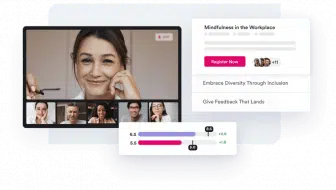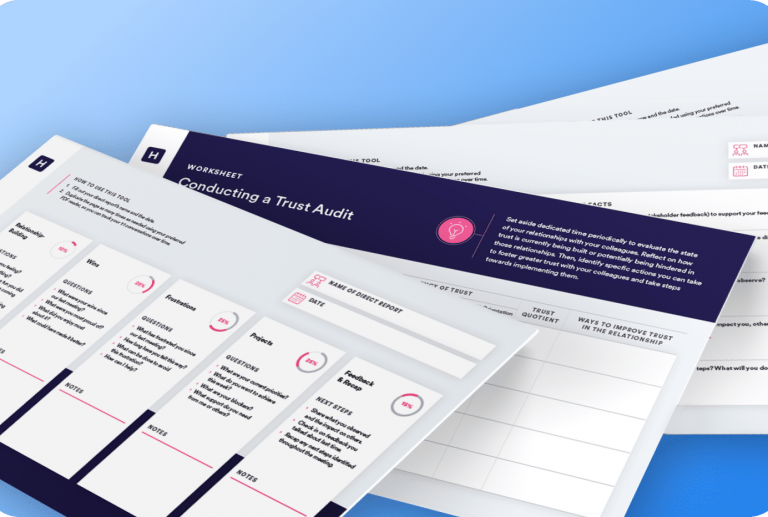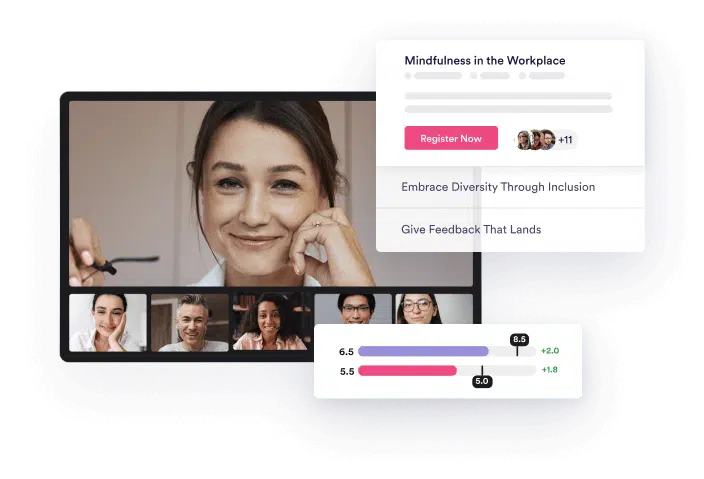What is Performance Management?
The definition of performance management is the process of setting goals, measuring progress, providing feedback, and taking actions to improve employee performance and, ultimately, achieve organizational objectives. It involves ongoing communication and collaboration between employees and their supervisors to ensure that individual and team performance is aligned with organizational goals and values. Performance management typically includes several steps, such as defining job expectations, establishing performance metrics and goals, providing regular feedback and coaching, conducting performance evaluations, identifying areas for improvement, and implementing development plans to help employees reach their full potential.
The continuous performance management cycle is the process of planning, checking in, and reviewing. It occurs throughout the year in support of accomplishing the organization’s strategic objectives. Effective performance management can help organizations improve employee engagement, productivity, and retention while driving business success.
5 Stages of the Performance Management Cycle
Focusing on continuous accountability creates a healthier, more transparent work environment, and emphasis on regular meetings can improve overall communications.
Performance management is a continuous cycle that involves:
- Planning work so that expectations and goals can be set. Groups and individuals channel their efforts toward achieving organizational objectives. Planning helps employees understand organizational goals, what they need to do, why they need to do it, and how well.
- Monitoring progress and performance continually. Consistently measuring performance and providing ongoing feedback provides the opportunity to check on employees’ and work groups’ progress toward reaching their goals.
- Developing the employee’s ability to perform through training and work assignments. Development efforts encourage and strengthen good performance and help employees keep up with changes in the workplace. For example, organizations can increase the capacity to perform through training, give assignments that introduce new skills or a higher level of responsibility, and improve work processes.
- Rating periodically to summarize performance. Managers evaluate employee or group performance against the standards in a performance plan. Evaluations summarize that performance and assign a rating.
- Rewarding good performance. Incentives, recognition of performance, and acknowledgment of contributions reinforce positive behaviors.
Top 5 Performance Management Resources
Performance management tools help people to perform to the best of their abilities and produce the highest-quality work most efficiently and effectively. They aim to define effective performance and develop processes to measure performance.
Managers can use performance management tools to adjust workflow, recommend new courses of action, and make other decisions to help employees achieve their objectives. These corrections help the company reach its goals and perform optimally.
The following are some performance management processes and tools.
1. Performance Reviews
A performance review assesses an employee’s functioning. It is an evaluation of how well they do their job. Formal performance reviews measure an employee’s outputs for a set period, such as a year or six months. Then, the assessor – usually a manager – has a written report with scaled metrics.
Managers who give constructive feedback can help their direct reports grow professionally and personally. Feedback from managers increases productivity improves engagement and reduces attrition.
2. 360-Degree Feedback
360-degree feedback combines self-assessment with input from an employee’s supervisors, colleagues, subordinates, and more. In addition, the employee receives anonymous feedback from those they work with, sometimes including customers and suppliers.
This strategy can help workers understand their strengths and weaknesses from various perspectives. Multiple assessors also reduce the likelihood of bias and discrimination tendencies.
3. Key Performance Indicators (KPIs)
A KPI is a quantifiable measurement that evaluates the success of reaching a milestone in a specific period. Some organizations also refer to these measurements as key success indicators.
KPI metrics are specific, measurable, attainable, realistic, and time-bound. Businesses can build KPIs for performance management to help align employees’ daily functions to an overarching organizational goal.
4. Personal Development Plans (PDP)
A personal development plan is a guideline and ongoing process to improve knowledge, skills, and experience so that an employee can achieve their goals. The structured framework helps identify the following:
- Skills an employee has
- Skills an employee needs to develop
- What an employee wants to achieve and how to achieve it
A PDP is a method of focusing goals into achievable steps, which helps employees keep track of their personal development.
5. Reward and Recognition Programs
An employee reward and recognition program is a system that celebrates employees’ successes. Usually, organizations set these programs up as an open forum to:
- Celebrate employee successes
- Show appreciation
- Improve productivity
- Encourage friendly competition
- Increase motivation
The rewards are monetary and non-monetary perks for meeting goals or embodying core values. An example of financial compensation is a bonus for meeting or exceeding a sales goal. Examples of non-monetary perks include better parking spots, becoming an employee of the month, and an extra day off.
Performance Management Training and Employee Development
Combining performance management with employee development encourages individuals to pursue learning and development (L&D) opportunities. Companies introducing performance management training starting with onboarding can also align organizational and personal goals and expectations.
Managers and direct reports can have conversations about career trajectories and growth options. Leaders can ask employees where their role is taking them to develop a personalized performance management plan together. Learning tracks fuel professional growth, and they are hiring enticements, as workers want to know their company values their future.
3 Performance Management Examples
Performance management is usually divided into corporate performance management (CPM) and people performance management (PPM).
CPM focuses on the entire organization. It is a set of management processes that help define and execute the business’s strategy. Leadership uses CPM to measure and monitor outcomes and to inform strategic decision-making and learning. Some CPM examples include the following:
- Benchmarking
- Strategic objectives
- Budgeting and forecasting
- Six Sigma
- Balanced Scorecards
PPM focuses on the employees’ performance. It ensures that their functioning contributes to the organization’s goals. PPM aligns employees’ performance with the improvement of corporate performance. Some PPM examples include the following:
- Appraisals
- Reward and recognition systems
- Personal development plans
- Performance targets
- Performance review meetings
Example 1: Consistent Feedback
An IT company ensures that its employees perform to the best of their capabilities by conducting annual performance evaluations with mid-year and monthly performance check-ins. The organization also holds a yearly 360-degree assessment. As a result, managers know direct reports are on the right track, and employees more often meet performance goals and receive the help and resources to meet their objectives.
Example 2: Performance Management Software
A large insurance company uses human resource management software to conduct a quicker and more frequent performance management cycle. The software facilitates timely report generation of pending self-reviews from the employees. Using the software, HR can nudge the employees who have yet to complete their assessments. This results in the organization completing companywide reviews within time and budgetary limits.
Example 3: Human-Focused Assessments
A customer service-based organization found that stack rankings were producing quantity-over-quality results. As a result, the leadership introduced a customer rating system and eliminated the existing number-of-calls-completed metric. Managers also provided more rapid feedback and introduced a more equitable reward structure.
Performance Management Best Practices
Effective performance management is crucial for the success of any organization. It ensures that employees are meeting their goals and contributing to the company’s objectives and helps identify areas for improvement and growth. Here are some best practices for performance management that HR and L&D leaders should keep in mind:
- Set clear and measurable goals: Goals should be specific, measurable, achievable, relevant, and time-bound (SMART). Employees should know what is expected of them and how their performance will be measured.
- Provide regular feedback: Feedback should be given frequently, not just during annual performance reviews. It should be constructive, specific, and focused on behaviors and outcomes. Managers should also encourage employees to provide feedback on their performance and ways to improve.
- Use a variety of evaluation methods: Performance evaluations should be based on a variety of ways, including self-assessment, peer feedback, and supervisor evaluations. This provides a complete picture of an employee’s performance.
- Link performance to rewards: Performance-based rewards such as bonuses, promotions, and recognition should be tied to specific goals and outcomes. This motivates employees to improve their performance and helps retain top talent.
- Provide training and development opportunities: Employees should be given opportunities to learn and grow, including training, mentoring, and coaching. This not only improves performance but also helps retain top talent.
- Use technology to streamline the process: Performance management software can help automate and streamline the performance management process, making it more efficient and effective.
By implementing these best practices, leaders can create a performance management system that is fair and effective and helps drive organizational success.










